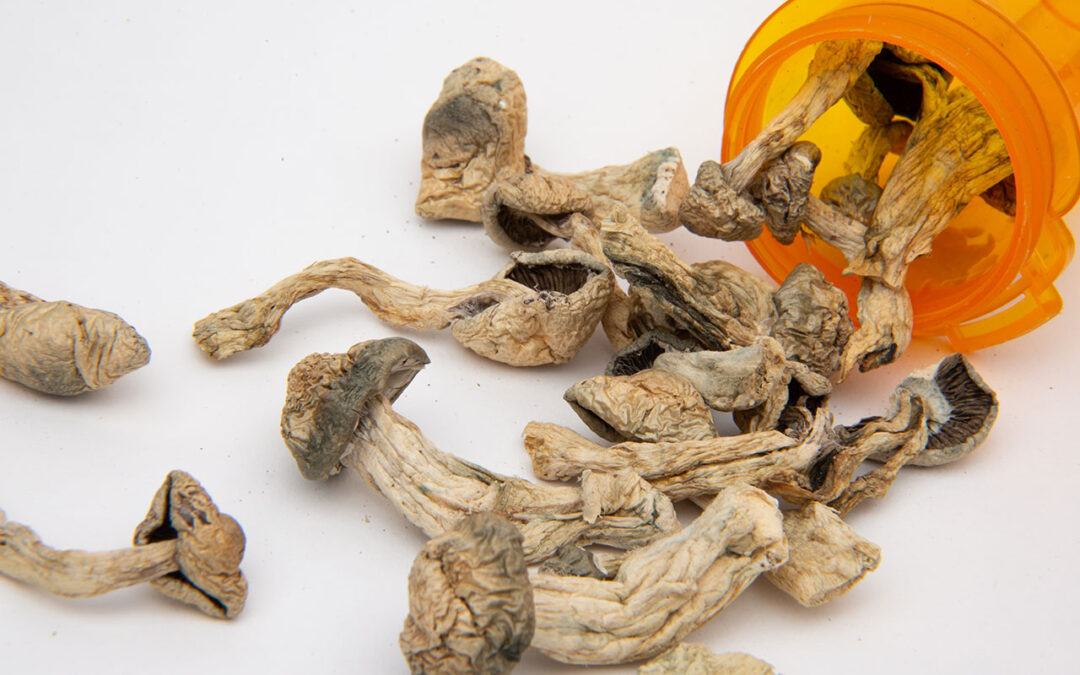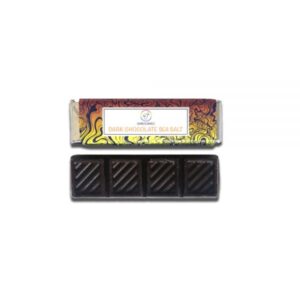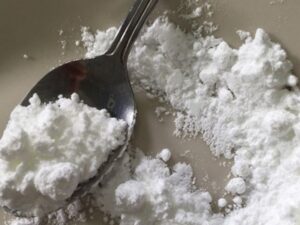Introduction to Psilocybin Mushrooms
Overview of Psilocybin Mushrooms
Psilocybin mushrooms, also known as magic mushrooms, have been used for centuries in various cultures for their hallucinogenic properties. These fungi contain the psychoactive compound psilocybin, which can induce altered states of consciousness, spiritual experiences, and profound introspection. The potency of psilocybin mushrooms, in terms of the concentration of psilocybin and related compounds, plays a crucial role in determining the intensity and duration of their effects on individuals.
Importance of Psilocybin Potency
Understanding the factors that influence the potency of psilocybin mushrooms is essential for both recreational users and researchers studying their therapeutic potential. The growing conditions of these mushrooms can significantly impact the quantity of psilocybin produced, leading to variations in potency levels. By exploring the relationship between growing environments and psilocybin content, we can gain insights into how to cultivate high-potency mushrooms consistently.
1. Introduction to Psilocybin Mushrooms
Overview of Psilocybin Mushrooms
Psilocybin mushrooms, also known as magic mushrooms, are a type of fungi that contain psychoactive compounds like psilocybin and psilocin. These compounds are known for their hallucinogenic properties and have been used for centuries in spiritual and therapeutic practices.
Importance of Psilocybin Potency
The potency of psilocybin mushrooms refers to the concentration of psilocybin and other psychoactive compounds present in the fungi. The potency can significantly impact the intensity and duration of the psychedelic experience that users may undergo when consuming these mushrooms.
2. Factors Influencing Psilocybin Potency
Chemical Composition of Psilocybin Mushrooms
The chemical composition of psilocybin mushrooms varies among different species and strains, which can influence the potency of the mushrooms. Factors such as genetics and environmental conditions play a role in determining the levels of psilocybin and related compounds in the mushrooms.
Role of Psilocybin in Psychoactive Effects
Psilocybin is converted to psilocin in the body, which then interacts with serotonin receptors in the brain, leading to altered perception, mood, and cognition. The potency of psilocybin directly affects the intensity of these psychoactive effects experienced by individuals consuming the mushrooms.
3. Impact of Growing Conditions on Psilocybin Content
Understanding the Influence of Environment on Psilocybin Levels
The growing conditions of psilocybin mushrooms, including factors like light, temperature, humidity, substrate composition, and airflow, can influence the production and accumulation of psilocybin in the fungi. These variables play a crucial role in determining the potency of the mushrooms.
Key Growing Conditions Affecting Psilocybin Potency
Optimal growing conditions, such as a controlled environment with the right temperature, humidity levels, and light exposure, can enhance psilocybin production in mushrooms. Variations in these growing conditions can lead to fluctuations in psilocybin potency in the harvested fungi.
4. Understanding the Relationship Between Psilocybin and Growing Environment
Biological Processes Involved in Psilocybin Production
Psilocybin production in mushrooms is a complex biological process influenced by factors like nutrient availability, metabolic pathways, and environmental cues. Understanding these processes can provide insights into how growing conditions impact psilocybin potency.
Effects of Light, Temperature, and Humidity on Psilocybin Development
Light exposure, temperature, and humidity levels play crucial roles in regulating the growth and metabolic processes of psilocybin mushrooms, ultimately affecting the accumulation of psilocybin and other psychoactive compounds. Maintaining optimal conditions can help maximize psilocybin potency in cultivated mushrooms.
5. Optimal Growing Conditions for High-Potency Psilocybin Mushrooms
Best Practices for Cultivating High-Potency Psilocybin Mushrooms
When aiming for potent psilocybin mushrooms, key factors such as substrate composition, humidity levels, temperature, and lighting play a crucial role. Employing proper sterilization techniques and selecting the right mushroom strain are also vital in achieving high potency.
Factors to Consider in Creating Ideal Growing Environment
Creating an ideal growing environment involves maintaining cleanliness, proper ventilation, and humidity levels within a specific range. Factors like airflow, light cycles, and the use of grow kits or DIY setups can significantly impact the potency of psilocybin mushrooms.
6. Potential Challenges in Consistently Cultivating Potent Psilocybin Mushrooms
Common Obstacles in Maintaining Psilocybin Potency
Inconsistent environmental conditions, contamination issues, and genetic variability within mushroom strains are common obstacles in cultivating potent psilocybin mushrooms. These challenges can hinder the consistent production of high-potency mushrooms.
Strategies for Overcoming Challenges in Psilocybin Mushroom Cultivation
To overcome challenges, it’s essential to maintain strict hygiene practices, monitor environmental factors closely, and implement quality control measures. Developing a deep understanding of the cultivation process and continuously refining techniques can help improve potency consistency.
7. Strategies for Enhancing Psilocybin Potency Through Growing Conditions
Advanced Techniques for Boosting Psilocybin Levels
Advanced techniques such as optimizing nutrient supplementation, implementing precise light schedules, and experimenting with different growing mediums can boost psilocybin levels in mushrooms. Fine-tuning these variables can lead to increased potency.
Innovative Approaches to Maximizing Psilocybin Potency
Exploring innovative approaches like using novel cultivation methods, genetic modification, or mycorrhizal symbiosis can offer new avenues for maximizing psilocybin potency. Continuous experimentation and adaptation of growing conditions can lead to groundbreaking results.
8. Conclusion and Future Implications
Summary of Key Findings on Psilocybin Potency and Growing Conditions
Optimizing growing conditions is vital for cultivating high-potency psilocybin mushrooms, with factors like environment, genetics, and cultivation techniques playing crucial roles. Understanding these dynamics can enhance the quality and consistency of psychedelic experiences.
Potential Research Directions for Further Understanding Psilocybin Mushroom Cultivation
Future research could focus on exploring new technologies, conducting controlled studies on different growing parameters, and investigating the genetic basis of psilocybin production. This ongoing research can deepen our understanding of psilocybin mushrooms and pave the way for innovative cultivation practices.
Conclusion
Summary of Key Findings
In conclusion, the potency of psilocybin mushrooms is intricately linked to the growing conditions in which they are cultivated. Factors such as light, temperature, humidity, and substrate composition can all influence the levels of psilocybin and related compounds in these fungi. By optimizing growing environments and employing advanced cultivation techniques, it is possible to enhance the potency of psilocybin mushrooms and ensure a more consistent product.
Future Implications
Moving forward, further research into the specific growing conditions that impact psilocybin potency can provide valuable insights for both recreational users and those exploring the therapeutic applications of these mushrooms. By gaining a deeper understanding of how environmental factors influence psilocybin content, we can potentially improve the quality and reliability of psilocybin mushroom cultivation practices, opening up new possibilities for exploration and study in this field.
FAQ
1. What are the key growing conditions that affect the potency of psilocybin mushrooms?
Factors such as light intensity, temperature, humidity levels, substrate composition, and air circulation play crucial roles in influencing the potency of psilocybin mushrooms. Maintaining optimal conditions throughout the cultivation process is essential for maximizing psilocybin content.
2. Can I enhance the potency of psilocybin mushrooms through environmental manipulation?
Yes, by carefully controlling and adjusting the growing conditions of psilocybin mushrooms, it is possible to enhance their potency. Strategies such as using specific lighting schedules, maintaining ideal temperature and humidity levels, and selecting appropriate substrates can all contribute to maximizing psilocybin content.
3. Are there risks associated with cultivating high-potency psilocybin mushrooms?
While cultivating psilocybin mushrooms can be a rewarding experience, it is essential to be aware of the legal implications and potential risks. Engaging in the cultivation of psilocybin mushrooms, especially for high-potency strains, may pose legal challenges in some jurisdictions. Additionally, improper cultivation practices can lead to contamination or unintended consequences, emphasizing the importance of thorough research and responsible cultivation.
4. How can I ensure consistency in producing high-potency psilocybin mushrooms?
Consistency in producing high-potency psilocybin mushrooms requires attention to detail and adherence to best practices in cultivation. By closely monitoring and adjusting growing conditions, maintaining cleanliness and sterility, and following proven cultivation techniques, growers can increase the likelihood of consistently producing mushrooms with desirable potency levels.









![How to Buy Shrooms Online in [Your Country/Region]](https://magicmushroomstore.us/wp-content/uploads/2023/07/Shoomiesstars-300x300.jpeg)





